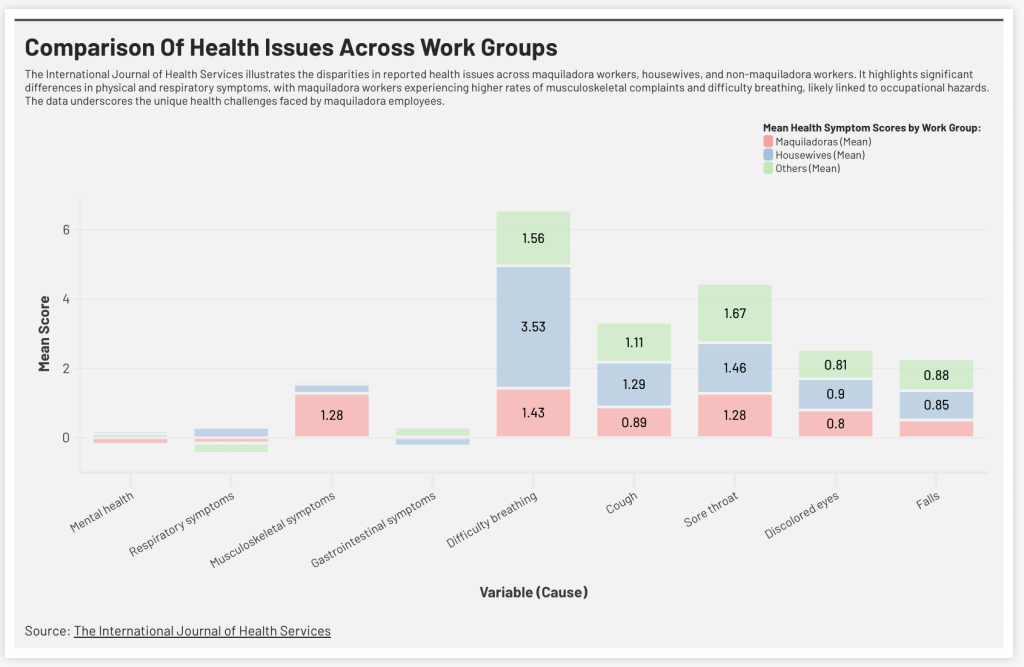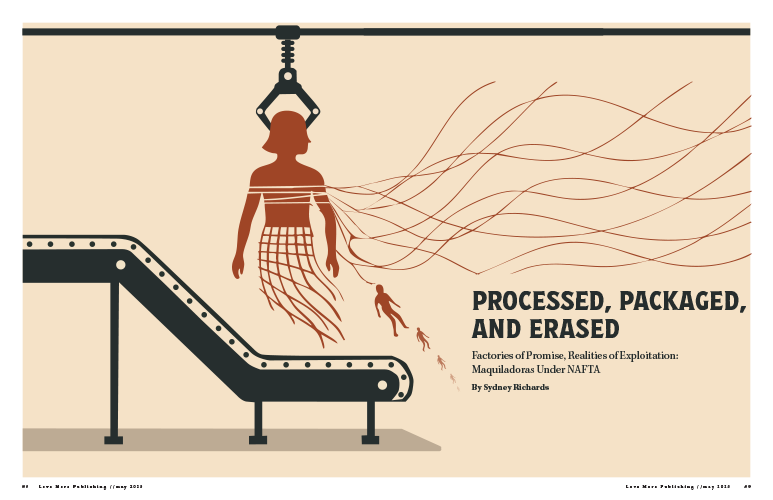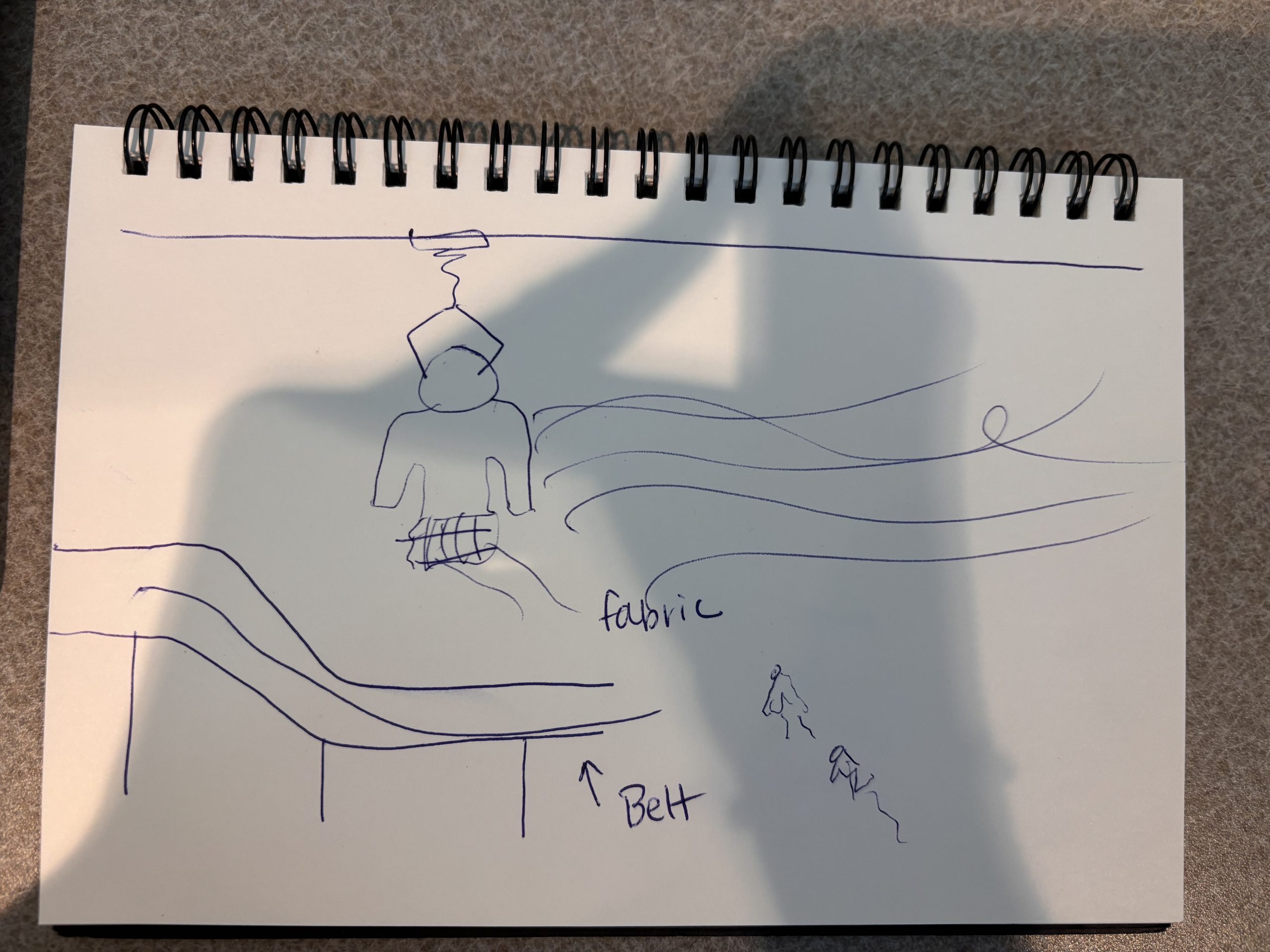When I designed my conceptual illustration, my intentions were for the design to embody the deep betrayal that maquiladora workers, particularly women, faced under NAFTA. The narrative extended beyond factories; it showed the illusion of opportunity and the harsh reality of exploitation. I decided upon industrial colors to illustrate erasing workers’ identities, leaving only the bland production machinery. The viewpoint of women employed in these factories was nameless; they were recruited for their ease of control, closely monitored, and ultimately discarded when they became a burden. I aimed for my design to produce a similar feeling of being destroyed by a system that valued them for their labor, not as human beings. I examined actual photographs from maquiladoras to provide a visual foundation for the story. Observing pictures of tightly packed sewing stations, where workers cramped beneath bright lighting, influenced my perception of the physical environment I aimed to show. The infinite lines of machines and individuals highlighted that these factories were not hubs of opportunity; they represented an empire of endless labor. This understanding impacted the repetition and structure of my final work.

I examined authentic photographs taken within maquiladoras, but the design evolved once I began to sketch. I was determined not to show violence. The genuine heartbreak portrayed was in how the exploitation became almost routine. During my initial sketches, I explored the concept of workers blending into the machines, gradually losing their human characteristics. These sketches influenced how I constructed the final layout, duplicating the human figures with the mechanical structures until they nearly vanished.
As I moved further into the design, I understood the importance of illustrating the emotional and social repercussions and highlighting the physical effects endured by workers. Incorporating health statistics anchored the project even more effectively. Charts depicting the elevated rates of respiratory ailments, gastrointestinal issues, and injuries among maquiladora employees made it clear that the damage was not a hypothetical but a real-life tragedy. The comparative graph illustrating the differences between maquiladora workers and other demographics, such as housewives and those employed outside maquiladoras, emphasized how significantly worse the conditions were within these factories. I strategically placed this evidence toward the conclusion of the design, as it served as a compelling final argument against the notion that NAFTA generated genuine opportunity.

This was a part of my ASF side-spread. I wanted to include real-life data showing the detrimental effects the maquiladora factories caused workers. This graph shows health data maquiladora workers faced major health risks, including respiratory illnesses, injuries, and long-term health problems.

This graph illustrates a comparison of health issues across work groups. Compared to housewives and non-maquiladora workers, maquiladora employees report significantly higher rates of musculoskeletal symptoms, difficulty breathing, and other health issues. These disparities highlight the physical toll of factory work under poor conditions.
Reflecting on the final piece, I believe it encapsulates the complex betrayal central to the maquiladora system. It went beyond merely broken promises; it included lives taken, health compromised, and identities destroyed for profit. Through my choices regarding color, structure, and the elements I decided to include (and exclude), I aimed for the design to prompt viewers to face the human toll frequently obscured by trade agreements that typically present only one perspective.


